Vera Dawn Walker’s story is one of tenacity, resourcefulness, and confidence, but might not have ever been told were it not for a Facebook post and a hunch.
In 2019, after the passing of her ex-husband, Vera Dawn’s nephew Kerry Lee Walker, Amelia Jane Eldridge and two family members were tasked with cleaning out the contents of his home on the Walker family farm in Clyde that once belonged to Kerry’s parents, the late William Horton (Buck) Walker and his wife. There they came across a small and very old suitcase containing Vera Dawn’s personal effects, documents and writings and quickly realized these were not only treasured memorabilia, but also an important part of aviation history.
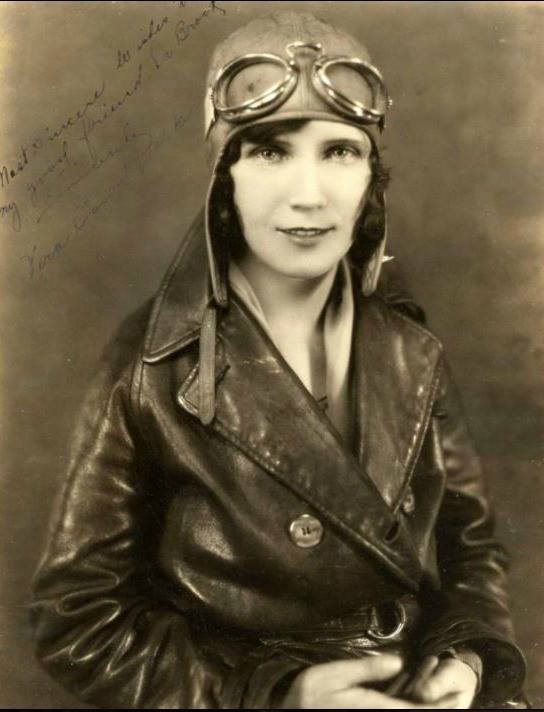 “My mom met Vera Dawn in the early 1960’s when Vera was visiting family in Abilene and knew she was one of the first female pilots and had even worked as a stunt double,” said her daughter Traci Sterling, who added that her mother realized the items were “history” and in 2022 reached out to the Smithsonian Institution’s Air and Space Museum, which indicated they would gladly take the items and archive them.
“My mom met Vera Dawn in the early 1960’s when Vera was visiting family in Abilene and knew she was one of the first female pilots and had even worked as a stunt double,” said her daughter Traci Sterling, who added that her mother realized the items were “history” and in 2022 reached out to the Smithsonian Institution’s Air and Space Museum, which indicated they would gladly take the items and archive them.
Believing that Vera Dawn “deserved more”, Traci contacted Taylor County Historical Commission member, Barbara Fahrlender, who was one of the editors of the organization’s Facebook page and whom Amelia had reached out to initially after Barbara had shared a news story on Vera Dawn on a page called “Remember in Abilene when….”
“We didn’t want Vera Dawn relegated to the archives, where no one would learn about what a special person she was,” said Traci. “When Barbara contacted me last summer saying the City of Abilene wanted the items for their airport renovation, we knew that was where she needed to be. Texas loves their own and wants to celebrate their own.”
Indeed, Vera Dawn’s life reads like the Hollywood movies in which she performed. Born and raised on a cattle ranch in rural West Texas, Barbara said that Vera Dawn would often look to the sky and dream of “flying like the birds,” well before she took the first airplane ride that would change her life.
In 1920, when she was 23 years old, Vera Dawn moved to California – with her brother William Horton arriving soon after – where they both worked as stunt doubles for MGM Studios. It was there that she caught the eye of actor Tom Mix, who was one of the first stars of the American Westerns. This was during the so-called Golden Age of Aviation, and as a promotion, a plane was brought to their movie set. The owner was offering short rides, and although Vera Dawn was “terrified,” Mix convinced her to join him in the air, and before the plane landed, Vera Dawn had decided the next chapter of her life – she wanted to become a pilot.
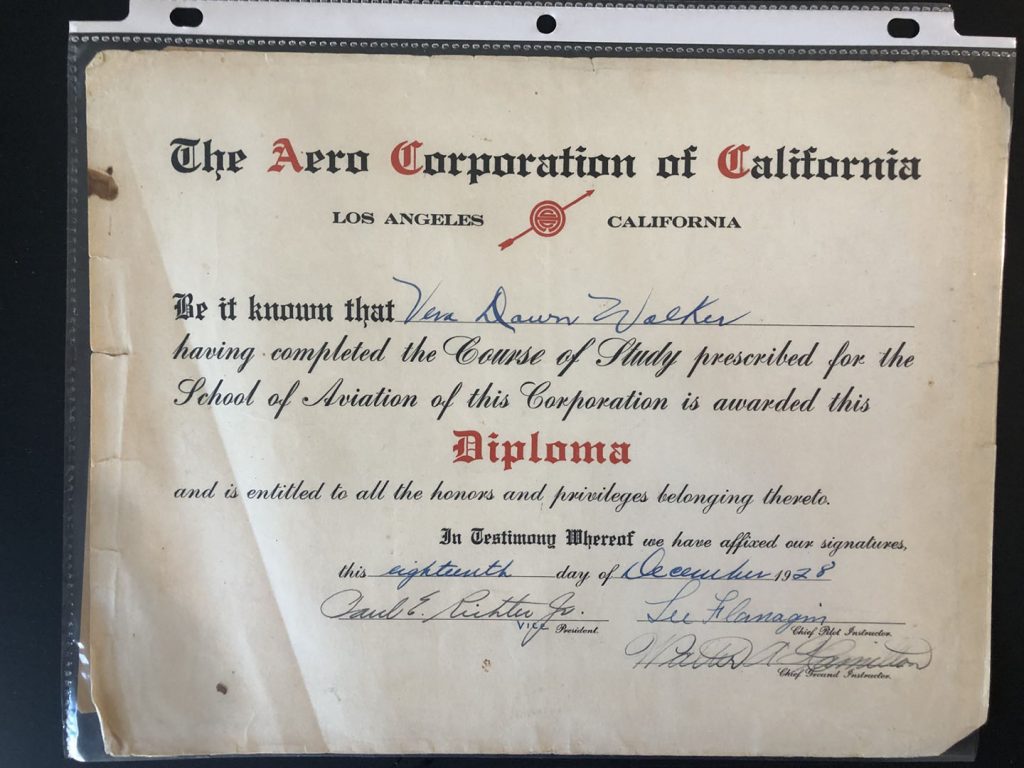 Although rejected from multiple flight schools, she eventually enrolled in the Standard Flying School of Aero Corporation of America, where she was the first woman to successfully solo and receive her pilot’s license.
Although rejected from multiple flight schools, she eventually enrolled in the Standard Flying School of Aero Corporation of America, where she was the first woman to successfully solo and receive her pilot’s license.
Traci said that Vera Dawn then “stormed the stage,” earning a reputation throughout Southern California as an outstanding pilot.
“Vera Dawn was bold and didn’t settle for the status quo,” said Traci, who added that this “can-do attitude” is reflected in the young pilot’s participation in the 1929 Women’s Air Derby cross-country race, only a year after completing her first flying lesson. Vera Dawn’s participation was extraordinary, as she was not only the youngest participant, but also flew while suffering from two broken ribs, which she likely sustained through her continued work as a stunt double.
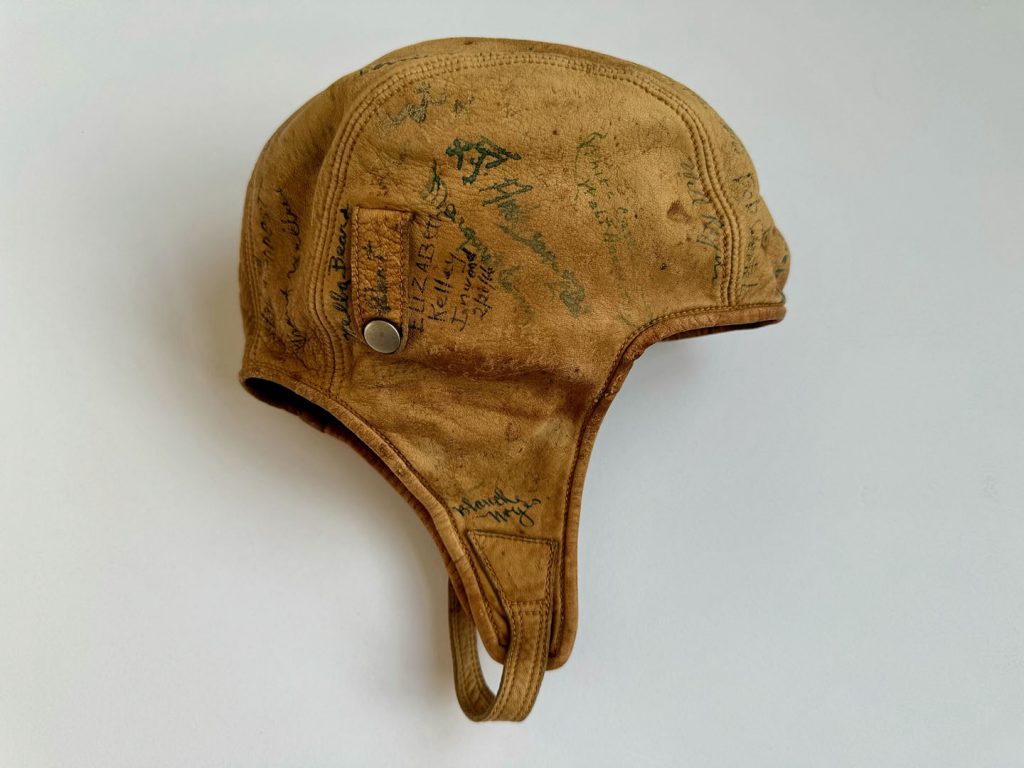 The event was intended to highlight women in aviation and was dubbed the Powder Puff Derby by actor and social commentator Will Rogers. Participants included renowned pilots such as Amelia Earhart and Florence “Pancho” Barnes and covered almost 3,000 miles over varying terrain spanning ten states. Starting in Santa Monica, CA and finishing in Cleveland, OH, the pilots were aided only by maps, a compass and railroad tracks.
The event was intended to highlight women in aviation and was dubbed the Powder Puff Derby by actor and social commentator Will Rogers. Participants included renowned pilots such as Amelia Earhart and Florence “Pancho” Barnes and covered almost 3,000 miles over varying terrain spanning ten states. Starting in Santa Monica, CA and finishing in Cleveland, OH, the pilots were aided only by maps, a compass and railroad tracks.
As part of a scheduled stop, Traci said that Vera Dawn landed in Abilene around August 22nd, much to the delight of the hometown crowd who welcomed her with a standing ovation. When she completed the race, the “Tiny Texan,” as she was often dubbed, given her 4’11” stature, once again exhibited her thirst for knowledge and adventure in her desire to become more adept at navigation.
Asked by the Hollywood Daily what the hardest part of the Derby was, Vera Dawn replied without hesitation, “I had to come (home) by train!”
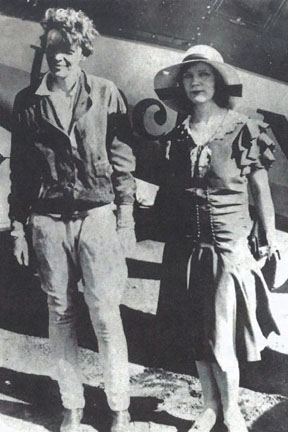 Traci said that in the fall of 1929, a few months after she returned from California, she participated in the California Air Tour, and that winter, only 14 months from the day of her first flying lesson, Vera Dawn became the 11th woman to receive a full transport license – the highest level of certification – from the United States Department of Commerce.
Traci said that in the fall of 1929, a few months after she returned from California, she participated in the California Air Tour, and that winter, only 14 months from the day of her first flying lesson, Vera Dawn became the 11th woman to receive a full transport license – the highest level of certification – from the United States Department of Commerce.
Vera Dawn then became a spokesperson and demonstration pilot for Panther Motors, all the while advocating for and encouraging other women to explore careers in aviation. At a time when women were, for the most part, expected to raise children and tend the home, Vera Dawn spoke out on the importance of taking chances and following ones’ dream, while at the same time keeping an eye toward financial independence.
While little is known of Vera Dawn’s life post-aviation, it speaks volumes about her continued quest for adventure. She participated in a few flying events and demonstration work, and it is believed that she contracted tuberculosis in 1930 after a flight to South America. After she reportedly stayed at her family’s ranch to rest, Vera Dawn moved to Arizona where some sources say she continued her recovery at a sanitorium. Not one to rest on her laurels or bemoan any disappointment that came her way, it is thought that upon regaining her health she acquired a copper and turquoise mine and some sources report that she panned for gold as well.
“Vera Dawn was an explorer,” said Traci. “She didn’t follow societal norms which was remarkable especially around the turn of the century. Had she not gotten tuberculosis there’s no telling what she would have done.”
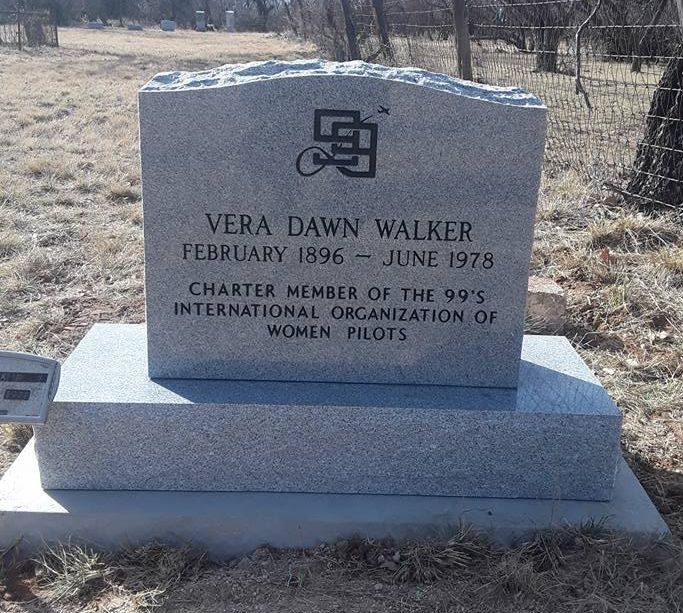 Barbara agrees and says it was for that reason she was so distressed to learn that Vera Dawn did not have a “proper” headstone.
Barbara agrees and says it was for that reason she was so distressed to learn that Vera Dawn did not have a “proper” headstone.
“As the editor of the Historical Commission’s Facebook page, I answered a message from an amateur genealogist named Susan who came across Vera Dawn and discovered she was an ‘interesting lady’ and was dismayed that there was just a metal marker on her grave,” she said.
Barbara said that Susan reached out to the Ninety-Nines, an international organization of female pilots, of which Vera Dawn was an inaugural member, and asked that they pay for a headstone to which they happily agreed.
On a cold day in February 2018, the gentleman setting the stone at the Cope Cemetery in Ovalo, where Vera Dawn is buried alongside her parents, commented to Barbara that “wow this lady was something, wasn’t she?”
Barbara said that Vera Dawn was “one of those women who was a role model,” and hopes other people, especially girls and women, will look at her life and agree that yes, she really was “something.”
In honor of Vera Dawn Walker and Women’s History Month, the following community events are planned:
Opening Reception at the Abilene Regional Airport March 8 from 2:30-4 pm
Contact Jason Groves at 325-676-6061 for more information.
Exhibits at the Abilene Public Library Downtown branch throughout March
Contact Heather Carter at 325-677-2474 for more information.
Exhibit at Taylor County Historical Commission throughout March
Contact Barbara Fahrlender at 325-669-5362 for more information.
ArtWalk March 14 from 5-8pm Center for Contemporary Arts
Contact Casey LaRue Chavez at 325-677-8389 for more information.
Related:
Women with Vision: Kaitlyn Shaw
Women with Vision: Sydney Weinkauf
By Molly Hill

























[…] Women with Vision: Vera Dawn Walker […]